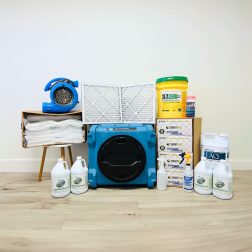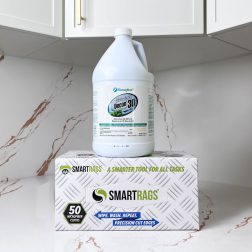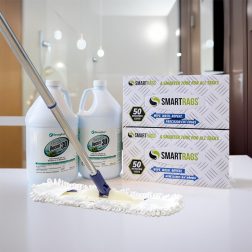No products in the cart.
Mold Resources
Let’s face it: while indoor mold growth is gaining some traction in the media, it’s still not exactly a hot topic in modern society. This has led to many misconceptions and mold myths that can make properly handling contamination difficult.
What’s fact from fiction?
Finding reliable sources and digging into the science behind issues like remediation, prevention techniques, and mold inspections can ensure your home is actually a safe environment. The more you know, the better you will be prepared to handle whatever contamination situation. Here are the top mold myths we hear at HomeCleanse daily.
The Top Six Mold Myths
Mold Myths #1: If you dry out the space, the mold will disappear.
Dry mold is not gone; it’s simply dormant. This can still cause contamination levels inside a home and trigger adverse health reactions, so simply drying out the space is not enough to properly handle the microbial growth.
Mold Myths #2: Bleach is a good product for handling mold.
Bleach has no surfactant, meaning some particles will stick to the surface and remain behind. Not to mention, dead mold can also trigger adverse health reactions. That is why killing mold is not the only goal. All contamination must go for the environment to be healthy once again.
Read this article to learn more.
Mold Myths #3: Mold takes a long time to grow.
Mold can grow in as little as 24-48 hours if there’s a source of moisture. That’s fast! All moisture-related opportunities should be taken care of as quickly as possible to avoid that fungus among us moving into a home.
Mold Myths #4: Wiping the mold away will effectively remove it from the surface.
Mold grows roots called hyphae, which can require an extensive process to remove, especially on semi-porous and porous surfaces. Simply wiping the surface growth away will not properly handle the root system, which means the mold can come right back. To properly remediate mold, you've got to treat it like a weed and pull it up by the roots.
Mold Myths #5: Fogging will effectively remove mold.
Fogging does not address the source that led to the issue in the first place or properly handle every part of the contamination, such as the roots of mold or mycotoxins. If the source isn’t fixed, the mold can come right back. If particles are left behind (even dead mold!), exposure will continue, and any chronic symptoms will persist. Fogging should never be the sole step of a remediation project.
Mold Myths #6: Mold is everywhere, so it’s no big deal
Sure, mold spores are everywhere, but they’re dispersed throughout the big, wide world. Once colonized mold develops in a home, the particles it releases are no longer scattered throughout nature, they’re trapped within the home like a contaminated snow globe. One contributor to this is modern building trends. By creating homes with net-energy efficiency in mind, there’s minimal airflow between the indoor and outdoor environments. So, technically, mold is everywhere that it is growing because a mold colony continually releases those spores into that surrounding environment. Think of it as a confetti cannon at a major sports event. The longer that mold grows, the more particles will build up within those walls. To make matters worse, some species of mold also produce microscopic toxins called mycotoxins when they feel threatened, adding even more particles to that indoor space. Exposure to this volume of particles is not the same as exposure to a few particles throughout the day.
Showing all 3 results
-

HomeCleanse DIY
All the equipment and materials we use to remediate your home, plus consultation and support...
-
$5,995.00 – $9,995.00 SHOP NOW -

Mold & Bacteria Contents Cleaning
Remove harmful pollutants that accumulate in the dust of your home. (Options available for renters...
-
$99.00 – $349.00 SHOP NOW -

HomeCleanse Cleaning
Take your cleaning to the next level buying all the tools we use to keep...
-
$299.00 – $549.00 SHOP NOW
Still Have Questions?
A member of our team is here to help! Click on “Get Started ➤” below to book a consultation with a member of the HOMECLEANSE team. We have a few quick questions that will help us put together a roadmap to solve or prevent all of your mold problems.
Two minutes of your time could lead to better health for you and your family.
